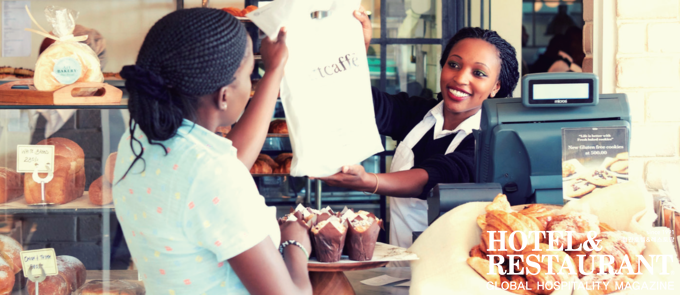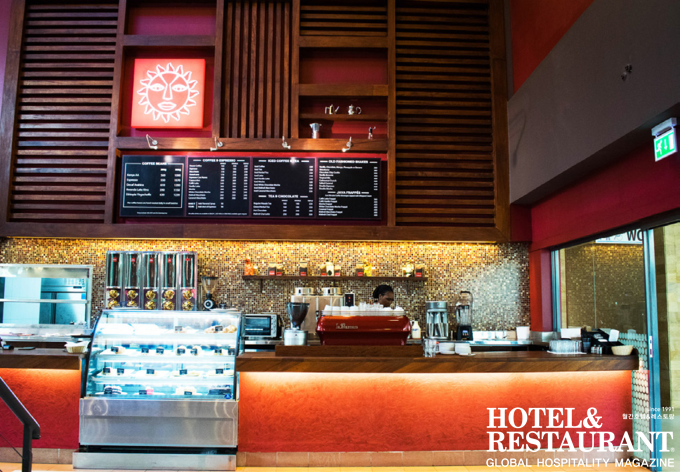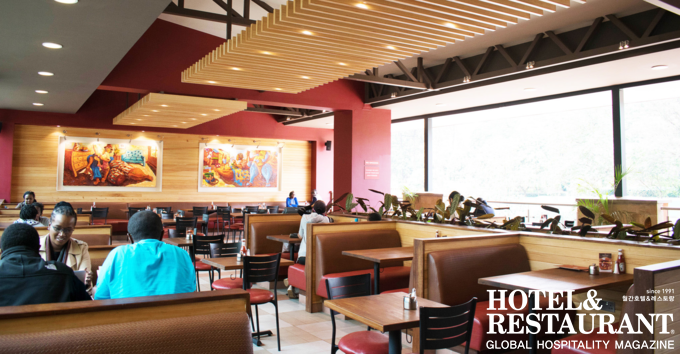
최근 사모 펀드 투자의 기회를 보기 위해 케냐에서 6일을 보냈다. 나는 몇 년 전 동아프리카에서 일했던 경험이 있었고, 동아프리카 지역보다도 발달과 조직화가 더욱 더딘 서아프리카에서 프로젝트를 진행했던 터라 케냐에서 근 3~4년간의 시장 변화를 지켜보는 것은 매우 흥미로운 일이었다.
케냐는 5500만 명의 인구와 1인당 GDP가 2000달러에 머물러 있는 비교적 작은 국가다. 수도인 나이로비만 봤을 때는 인구가 650만 명인데 이를 전제 국가 대비로 따져보면 도시화율이 27%로 아시아 신흥 경제국인 인도가 55%, 베트남이 35%인 것에 비교하면 낮은 수준이다. 사하라 사막 이남의 동아프리카는 아시아 신흥 시장에 비해 상업 부동산 개발이 매우 제한돼 있어 음식점과 소매업의 성장에 영향을 미친다. 이는 케냐도 마찬가지지만 외식시장 성장 기회는 케냐가 훨씬 더 유리한 조건에 있다. 현재 케냐에는 인터내셔널 브랜드가 거의 진출하지 않았으며, 그나마 몇 군데의 브랜드도 아직 프랜차이즈화가 활발히 이뤄지고 있지 않아 매장이 적다.
케냐 최고의 패스트푸드 브랜드는 Pizza Inn과 Chicken Inn으로 두 브랜드 모두 Zimbabwe그룹의 Simbisa에서 운영, 약 150개의 매장을 론칭했다. 그룹은 Baker Inn과 Creamy Inn도 동아프리카 전 지역에서 운영 중이다. 각 매장은 1인당 평균 2~3달러의 금액으로 메뉴를 즐길 수 있어 직장인이나 가족 고객이 주로 찾는다. 케냐에는 이외에도 우리가 흔히 아는 KFC(20개), 버거킹(4개), 도미노피자(7개)와 같은 브랜드가 존재하는데, 그들은 각종 소싱 요구가 복잡할 뿐 아니라 인프라 확충의 문제, 높은 프랜차이즈 수수료 및 로열티 지출로 인해 1인당 5~7달러가 소비되는 프리미엄 브랜드다. 각 체인은 여러 방법을 통해 수익 창출의 기회를 보고 있지만 아직까지 인프라에 대한 투자나 안정적인 수익을 보장하는 단계까지 올라가지 못하고 있다.
케냐의 대표적인 풀 서비스 레스토랑 브랜드 Java House는 20년 전 두 명의 미주 노동자에 의해 시작됐다. 케냐는 고급 커피 수출국으로 잘 알려졌지만 사실 커피보다 티 문화에 익숙한 나라여서 당시 ‘자바만의 커피 한 잔’을 찾기 어려웠다고 한다. 그래서 두 미국인은 커피숍을 열고, 그들에게 원두를 볶는 방법을 전수할 컨설턴트를 고용해 하나씩 차근차근 해결해 나가기에 이르렀다. 이러한 노력으로 점점 Java House는 다국적 기업과 유엔 사무국에서 근무하는 외국인을 중심으로 유명세를 얻었으며, 그 기세로 2012년에는 아프리카 중심의 사모 펀드 그룹 Emerging Capital Partners(ECP)가 다수의 지분을 인수, 5년 뒤인 2017년에는 Abraai 그룹에 의해 상당한 수익을 올렸다. Java House는 전형적인 미국의 캐주얼 다이닝을 7~10달러 선에서 합리적으로 제공해 케냐를 비롯한 우간다, 르완다 등의 70개 도시로 활발한 확장을 한다. Java House는 철저히 아프리카에 뿌리를 둔 브랜드로 아프리카인들 사이에서 성공 사례로 꼽히고 있으며, 모든 상점은 각 지역의 특색에 맞춰 아프리카 예술품을 전시하면서 개성을 강조하고 있다.
이제 Java House는 그들의 경쟁사인 Artcaffe와 함께 한 단계 더 높은 성장을 눈앞에 두고 있다. Artcaffe는 10년 전 오픈한 이래로 현재 나이로비에 12개 매장을 운영, 앞으로 1년 이내 8개의 레스토랑을 추가로 오픈할 예정이라고 밝혀 계속되는 성장이 기대되는 브랜드 중 하나다. ECP는 작년 Artcaffe 지분의 대부분을 인수, 더 빠른 매장 확장을 위해 공격적인 지원을 아끼지 않고 있다. Artcaffe는 높은 품질의 음식과 베이커리를 제공해 대부분의 메뉴는 Java House에 프리미엄 상품으로 판매되고 있으며, 레스토랑 디자인도 하이앤드 고객을 타깃으로 고급스럽게 연출했다. 또한 Java House의 설립자 Kevin Ashley가 Abraaj 그룹 인수 이후 회사를 떠나 현재 오랜 커피 체인 경험을 가진 영국의 경영자가 브랜드를 운영하는 반면, Artcaffe는 여전히 원래 창업자인 이스라엘 기업가가 운영하고 있다는 점도 눈여겨 볼 점이다.
이와 같은 그룹들의 성장으로 케냐 국민들의 캐주얼 다이닝 선택의 폭이 넓어졌다. 1인당 15~25달러 범위 내에서 더 좋은 분위기와 음식을 제공하는 인도, 중국, 이탈리아, 그리고 아프리카 레스토랑이 자리 잡고 있으며, 이런 성장을 이끈 남아시아계 아프리카인들은 다양한 무역 및 부동산 분야에서 여러 세대에 걸쳐 막대한 자본을 축적했다. 식민지 시절 영국과 동아프리아로 이주한 남아시아인 ‘디아스포라(Diaspora, 타국에 거주하는 유대인)’는 중국인과 비슷하게 전 세계 범위에서 활동 중이다.
케냐의 가장 큰 외식 서비스의 기회는 여전히 저개발 부문으로 남아 있다. 특히 높은 가격 민감도를 감안하면 인터내셔널 브랜드를 들여오는 것보다는 로컬 기반의 레스토랑이 보다 합리적인 방법인 듯 보인다. 케냐에도 치킨은 가장 매력적인 카테고리 중 하나로 Java House는 최근 아프리카의 향미를 입힌 그릴드 치킨 브랜드 Kukito 론칭에 심혈을 기울이고 있으며, Artcaffe는 스페인 타파스뿐 아니라 고메 버거 콘셉트 메뉴를 연구개발 중이다.
지리적인 악조건을 이겨내고 케냐 외식시장은 경쟁이 치열해지고 있으며, 혁신은 증가하고 있다. 특히 Total과 같은 에너지 그룹이 개발하고 있는 스트립 몰은 비교적 낮은 임대료로 최대의 효과를 볼 수 있는 기회를 제공할 것이다. 곧 Total 그룹의 스트립 몰에는 약국, Java House, Mug & Bean Express와 같은 소매점들이 입점할 것으로 보인다.
케냐 외식시장에 적용할만한 한국 브랜드의 경우 합리적인 베이커리 브랜드인 파리바게트과 같은 콘셉트가 떠오른다. 전통적인 한국 음식은 다소 적응하는 데 힘들어 보이지만 한국의 치맥 문화도 충분히 매력적인 콘텐츠로 보인다. 한국 기업도 동아프리카 특성에 따른 외식시장의 위험요소를 충분히 연구, 그룹이 가지고 있는 콘셉트를 현지 고객에 맞춰 적극적으로 변형하고자 하는 기업에 대해서는 분명 큰 기회가 있을 것으로 확신한다.
케냐 외식시장은 이제 시작 단계에 불과하다!

KENYA – GROWING DINING SCENE
I recently spent 6 days in Nairobi, Kenya, looking at some investment opportunities for several private equity groups. I have worked in East Africa several years ago so it was interesting to see the changes in the market over the past 3-4 years. Our team also recently completed a project in West Africa which is somewhat less developed and more disorganized than the Eastern part of Sub-Saharan Africa.

Kenya is a relatively small country with 52 million people and a per capita GDP of US$2,000. The Capital, Nairobi, has a population of about 6.5 million. The country has a relatively low urbanization rate of 27% compared to many emerging economies in Asia which can range between 35% (Vietnam) to 55% (Indonesia).
Compared to emerging markets in Asia, Sub-Saharan Africa has very limited commercial real estate development, which impacts the growth of restaurants and other retail businesses. Kenya is no different but better than most other countries in the region. There are very few international brands here and the ones that are here have a very small number of stores. The market is still too underdeveloped for brands like H&M, Zara, McDonald’s and Starbucks.
The leading fast food brands are Pizza Inn and Chicken Inn, both operated by a Zimbabwe group, Simbisa Brands, with a total of approximately 150 locations. The group also operates Baker Inn and Creamy Inn throughout the East Africa region. Spending per person in these chains is about $2-3 which makes them an occasional affordable purchase by office staff and families. KFC (20 locations), Burger King (4 locations) and Dominos Pizza (7 locations) are premium brands ranging between $5-7 per person. Their higher prices are due to a combination of their sourcing requirements, infrastructure needs, and franchise fees and royalties which are paid to the USA brand owners. These chains have yet to reach a scalable level where they can leverage their investments in infrastructure and generate consolidated profit.
The leading full-service restaurant brand in Kenya is Java House, a concept started 20 years ago by two American aid workers. While Kenya is well known for their exports of high-grade coffee, the country is a tea drinking society and it was difficult back then to find a good cup of java. The two Americans solved the problem by opening their own coffee shop and recruiting a consultant to teach them how to roast the beans. Their stores were busy from the start with expatriates from multinational companies and the United Nations offices here. In 2012, an African centered Private Equity Group, Emerging Capital Partners (ECP), bought a majority shareholding in the group, which was subsequently sold to the Abraaj Group in 2017 for a considerable profit. Java House sells typical American casual dining food at very affordable prices ($7-10) and has grown to more than 70 stores in Kenya, Uganda and Rwanda. It is a true African success story with strong African roots and all stores are keen to display African art in each location.
Java House now finds itself with a competitor, Artcaffe, which has been growing as well since its start less than 10 years ago. There are currently 12 locations in Nairobi, but the chain will add a minimum of 8 new locations over the next 12 months. ECP bought a majority stake in the group in 2018 and is providing expansion capital for faster store development. Artcaffe offers somewhat higher quality food and much better bakery products. Most menu items sell at a premium to Java House and the design is bit more upmarket as well. It is also interesting to note that while Java House is currently managed by a British executive with long term coffee chain experience, Artcaffe is still run by the original founder, an Israeli entrepreneur. (The founder of Java House, Kevin Ashley, left the company with the purchase by Abraaj Group.
Kenyans now have other choices as well, especially in the upper casual range. There are excellent Indian, Chinese, Italian and African restaurants now with better ambiance and better food at spending per person in the $15-25 per person range. Many of the entrepreneurs starting up these concepts are African born South Asians, who have made their money over several generations in various trading and property endeavors. The South Asians migrated to East Africa with the British during the start of the colonial era and their diaspora is very large across all continents, similar to the Chinese. They are the true entrepreneurs of East Africa, many of them arriving from Uganda, during the Idi Amin era.
The greatest foodservice opportunity still remains the low-end segment which is still very underdeveloped. It makes more sense to develop local concepts rather than license a big international brand with all the added costs, especially given the high price sensitivity in the market. Chicken is still the most appealing category and Java House recently started to test their own local chicken brand, Kukito, a flame grilled Africa flavored product. Artcaffe is also rolling out a gourmet burger concept, as well as Spanish tapas.
The Kenyan market is becoming more competitive and innovation is increasing. There are plenty of opportunities left, especially in the lower priced segments to take advantage of all the small strip malls under development by energy groups, like Total. You often find a pharmacy, Java House or Mug & Bean Express unit as well as other retail services at these sites.
I think the best opportunity for Korean groups in this market is an affordable bakery concept like Paris Baguette. Korean food is not likely to be a big hit but fried chicken and beer concepts could be appealing as well since Kenyans like both.
There are clearly large opportunities in East Africa for those groups willing to assume risk and modify their concepts for the local customer. The development of the foodservice segment is just beginning.
Joel Silverstein
이스트웨스트 호스피탤리티 그룹 대표
현재 홍콩에 거주하며 최고 경영진과 포춘 Fortune 500대 기업이 다수 아시아 국가에서 지속 가능한 성장을 할 수 있게 도와주고 있다.
- 2024.11.05(화)~2024.11.11(월) 투어리즘&마이스 서울특별시관광협회, 제27대 협회장 후보자 등록 실시
- 2024.10.25(금)~2024.11.07(목) 대회·공모전 "서울 관광산업 발전에 기여한 자를 찾습니다."…서울특별시관광협회(STA), 2024 서울관광대상 수상 후보자 모집
- 2024.10.18(금)~2024.10.19(토) 축제 한국관광공사, 원주 시민과 함께하는 ‘세계로(路) 페스타’개최
- 2024.10.13(일)~2024.10.20(일) 축제 하슬라국제예술제 오는 13일 개막… 공연장으로 탈바꿈한 강릉 정체성 담긴 장소들
- 2024.10.5(토)~2024.11.3(일) 축제 대한민국 대표 공연관광 축제 ‘2024 웰컴대학로’ 개최
- [Joel의 Global Dining Market] 로보틱스, 자동화의 시대가 도래하다 2021-06-15
- [Joel의 Global Dining Market] 가상공간의 외식 브랜드 시장 속에 실재할 수 있을까? 2021-04-05
- [Joel의 Global Dining Market] 뉴노멀에 적응하는 식당가들의 새로운 전략_ 배달음식 전문점 2020-11-12
- [Joel의 Global Dining Market] 해외 진출의 관문? 홍콩 시장의 인기_ 외식업계 위기와 변화 면밀히 살펴봐야 2020-09-20
- [Joel의 Global Dining Market] 코로나19의 여파, 미국 외식 산업의 위기_ 더 좋은 음식과 더 나은 서비스로 고객 공략해야 2020-08-03
- [Joel의 Global Dining Market] 코로나19로 기세 오른 플랫폼 비즈니스_ 레스토랑과 상생하는 모델 모색해야 2020-06-02
- [Joel의 Global Dining Market] 아픈 손가락의 성장 필리핀 2020-04-20
-

[손진호 교수의 와인 Pick] Louis Maurer
- 2024-11-16
- 손진호 칼럼니스트
-

(사)한국중찬문화교류협회, 시애틀서 한식·K-메디푸드 진수 선뵈
- 2024-11-15
- 서현진 기자
-

[GLOBAL NETWORKS] 푸꾸옥의 장기적인 발전 방향
- 2024-11-15
- 최성웅 칼럼니스트
-

그랜드 하얏트 서울, ‘윈터 온 아이스’ 아이스링크 룸 패키지 예약 오픈
- 2024-11-15
- 서현진 기자
-

에그드랍, 태국에 이어 필리핀 최고의 초대형 쇼핑몰에 ‘글로벌 신규 매장’ 오픈 예정
- 2024-11-15
- 호텔앤레스토랑
-

서울시관광협회, 서울 관광숙박업(호텔업) 종사자들의 안전 역량 강화에 앞장선다
- 2024-11-15
- 서현진 기자






























